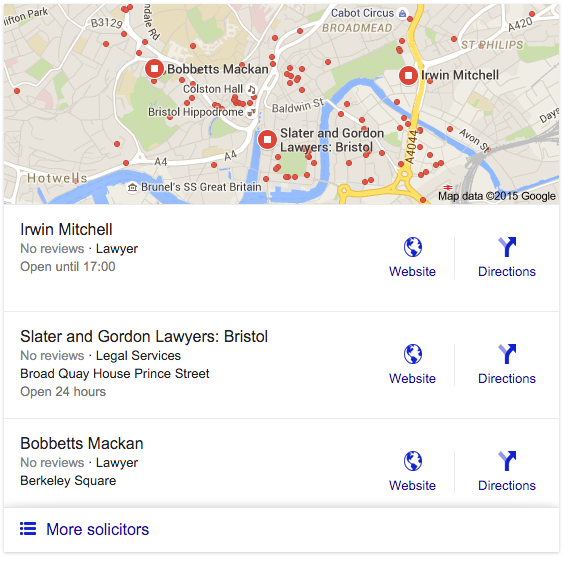Top 5 SEO Ranking Factors - Multi-Location Businesses

Create a unique Google My Business Profile for each branch location
1) Do not use location modifiers tagged on to your business name/brand. Only use the name of your brand as it stands on its’ own. Fully optimise each GMB page with 5-10 photos (staff, location shots, cover image and logo); a unique and thorough description that mentions the services you offer; Name, Address and Phone (NAP) number exactly the same as appears on the separate contact pages on your website for each branch location, and link each GMB Page to it’s own branch contact page, not the home page. Verify your GMB Pages by requesting the Google postcard verification process and returning to enter your unique code to prove ownership. Be careful to select the same categories that best describe your business and keep them consistent between all your branch location pages. Post regular updates to your GMB Page and curate reviews.
2) Every branch must have its' own contact page and, ideally, these should be easily found off your main Index via an "Our Locations" parent hierarchy accessed directly from your main navigation menu. Fully optimise these pages with unique, descriptive, local content. This includes adding Local Business Address Schema code, as well as creating locally themed content that relates to local services and support that a user on your site might benefit from. It is important to have a unique local area code phone number for each location. Don't share a phone number between your branches. You should also consider building additional local keyword content silos off of your contact pages if your aim is to rank for these terms in your local area. Display these unique local service pages on your side bar menu on each contact page. Last but not least, add a Google Maps embed to your contact pages that displays your branch location with exactly the same NAP details as appear on the contact page.
3) Register your branch locations separately on the major business directories and link each one back to its’ unique contact page, not the home page. Start with (Bing, Central Index, Scoot, Foursquare, Yelp, Factual, Thomson Local, Yell, Cylex). YOU MUST KEEP YOUR NAP DETAILS THE SAME ON EVERY DIRECTORY. Your goal is 100% consistency of NAP details on every directory, exactly matching your contact page information. Google doesn't want to be confused. It likes it when it can trust that your contact information is correct everywhere it looks. This can be a major problem for businesses that have had many location moves, mergers or inadvertently created scores of duplicate listings. Creating and maintaining NAP consistency is one of the most time consuming tasks of any local seo campaign, even with the help of citation tracking services like Moz or Bright Local.
Verify or claim every listing that allows so that you are able to make future changes when necessary, and to add seo/trust value to your listings. Some verifications are by phone and others by post. Do not forget to locate local business directories, as well as your particular service niche-specific directories and add your local branches to these. Request links from your local chamber of commerce, trade organisations, local partners, suppliers and even local media organisations. Make sure that your local links are all linking back to your local contact pages wherever possible.
Curate, encourage and respond to customer reviews
4) Customer reviews and testimonials are increasingly important factors to consider. Google+ reviews are the most loved by Google, but many other directories, including Yelp offer a review function. Unfortunately, it's often easier to get a negative review than it is a positive one. If you get a negative review, simply respond to it as quickly and constructively as possible. To increase your chances of earning a positive review, try sending a short-cut link to your Google+ review page to clients you already know had a great experience with you as part of a thank you email campaign.

Site health and structure
5) A healthy, well organised website with no duplicate content and clearly defined structural hierarchies and keyword optimised meta data is the bedrock of any SEO campaign. You always want fast loading pages with few if any errors. You can use Google's page speed tester to check your mobile and desktop load times and follow the suggestions indicated to improve if necessary. You will definitely want to check Google's handy testing tool to see if you have a mobile-friendly website if you intend to rank well on mobile devices. As far as Local SEO is concerned, you will also want to make sure that you include local area keywords in your contact page content silo urls, meta titles and h1's and that these pages are easily found by humans and crawlers, as well as being located in your site map and being indexable. Don't forget that you have options to geo-tag local photos on local contact and silo pages, as well as optimise your image alt tags as appropriate.
Conclusion
There are obviously many more aspects of SEO to consider in a local SEO campaign, but the above list is a strong starting point to get you going. If you take nothing else away from this lesson, at least get your GMB page 100% complete and consistent with your branch contact page details. From there, spread out and make sure that eventually, absolutely every single directory listing on the web matches those details exactly. If you can at least begin there, you will be well on your way to a sustainable local SEO strategy and can bolt on the rest of the above points as and when you are able.

